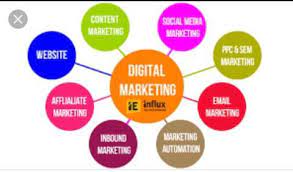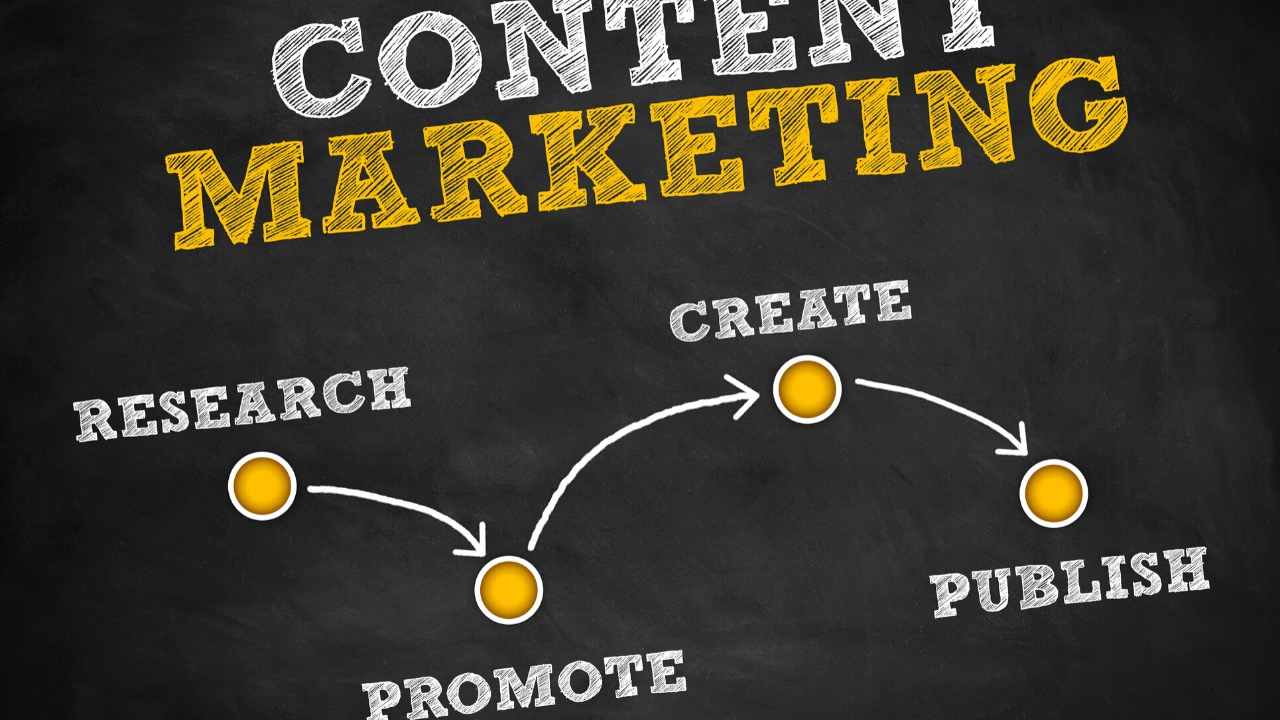
So, you have decided to launch your own digital advertising strategy. What's next? Well, this article will walk you through the various steps of the process, from choosing your channel to researching your audience. This article will teach you how create a customer experience and split test your strategies. Then, you'll know if your new strategy is working for your brand. If not, you're not alone. There are many other businesses who have had the same question: "How do I start a digital marketing strategy?"
Researching your audience
You must research your audience before you can create a digital advertising strategy. Quantitative research is a way to do this. It involves surveying large numbers of people and then generating statistical data. If you are looking to create an email campaign that targets a particular audience, for example, you will need to identify their pain points and interests. You can also review their purchase history to determine if they have changed their purchasing habits. Then, you can target your marketing message to the specific audience segments.
A successful digital marketing strategy requires you to get to know your audience. If you don't do enough research, you won't know what your audience wants and needs. Luckily, research can help you identify those issues and develop personalized content for them. Research will also help you predict their needs so that your marketing is more effective. Here are some tips on researching your audience.
Interviews: Conducting surveys can help you understand your audience better. Ask customers to send you emails, post customer reviews on social networks, and interview them. These surveys can provide valuable insight into what your audience is like. You can then create your digital marketing strategy. It's important to research your audience, but it is equally essential to create a compelling campaign. This will enable you to reach your audience and increase sales.
Segmentation: By understanding your audience's preferences, interests, and lifestyle, you'll be able to tailor your messaging to them. Segmentation is a powerful tool to create stronger messages and connect with customers in a more personal manner. Adidas, for example, sent a gender-specific email to its customers, while the clothing company categorised its audience by gender. Customers buy jeans in large numbers, so a survey asking them how they rate the retailer would result in an average rating of 8/10.
Choose your channels
It is essential to choose the right digital marketing channels for your product or services promotion. Your choice should depend on your primary objectives, target audience, competition and budget. Different channels will produce different results. Make sure to choose carefully and find the one that works for you. You will need to choose which channels you use to determine the types of content you want and how your ads are formatted. Content marketing is still the king and most relevant form of marketing. But if you want reach your audience, you need to use this technology.

The business goals will affect the choice of digital marketing channels. You should determine your long-term as well as short-term goals. A long-term goal could be to increase revenue by 20% over the next two years, while a short-term goal might be to generate 400 sales qualified leads within six months or increase website traffic by 70% in eight months. Make sure to identify the short-term and long-term goals of your business so that you can determine which channels will work best for you.
Make sure you analyze each channel's effectiveness before you decide which channels are best. Each channel has its strengths, weaknesses, freedoms, and limitations. It is important to identify the type of content you need for each channel as well as its cost. You should make sure you have all of your budget available before you begin using new channels as part of your digital marketing strategy. Facebook and Twitter are great options for creating buzz.
Create a customer journey
A customer journey plan is one of the key elements to a successful digital marketing campaign. These maps map the customer's path from decision to action. The customer journey maps can be used to show customers the entire customer journey, from the first stage of a sales funnel to when they become loyal customers. It can also be used to help identify areas that need improvement.
In a nutshell, a customer journey map represents a prospect's journey toward purchase. It helps marketers map out the questions they ask and the pain points they experience along the way. The higher-funnel stages are aimed at creating awareness and interest, while the final stages are devoted to fostering brand loyalty. This begins with awareness. You can achieve this through social media, word-of-mouth, search engine suggestions or blogs.
After researching and learning about a brand, potential customers begin the information-gathering phase of the customer journey. Although they may not know you personally, they will know what they are looking for. This phase of the Customer Journey should include content that assists customers in making informed decisions. In addition to this, brands can offer a free trial period to customers to eliminate any final obstacles in their purchasing process.
Marketing professionals can create a customer journey map that will allow them to target their ads by understanding what steps customers take in order to purchase a product or service. Each stage in the customer journey needs to have its own buyer persona. Marketers can tailor their marketing campaigns according to the goals of each stage by identifying these. A customer journey map can also help marketers better understand their target audience by identifying what motivates each stage of the customer's decision-making process.
Split testing your strategy
Split testing can help you improve your business profitability. You can test headlines and page copy as well as button text, image, social media buttons, email marketing, and calls to action. Below are some scenarios that you could test. Split testing can be used to determine which marketing strategies will lead to increased sales and profitability. You must use the right size sample. Split testing should be performed regularly with a suitable confidence rating.
Split testing helps you identify which marketing strategies are performing well and where you need to make improvements to maximize their effectiveness. Split testing also allows you to see if your online advertising strategy is generating leads, and whether it is bringing in return. Split testing involves experimenting with different versions of a website, or individual elements of it. The split testing results will help you to determine if your website generates money. Once you have established which versions are producing more leads, you can adjust your digital marketing strategy.

ClickFunnels lets you test 6 different versions a single advertisement to get ideas for split-testing. Facebook is another great place to find split test ideas. Facebook offers many examples of Facebook ads. You can also copy these to see which ones work best. Split tests can also be tested on landing pages. Split tests can be conducted on landing pages. For instance, moving your CTA under the fold increased conversions 304% while removing it from the landing webpage caused cart abandonment rates down 33%.
Split testing is an essential part of conversion optimization. Split testing refers to dividing traffic between two groups, the control group and the variant. Split testing involves splitting traffic so that 50% of the traffic is shown the control variation, and the rest the variant. Multivariate testing involves dividing traffic into equal segments. Each segment is then shown one variant of the variant. Split testing can help improve your digital marketing strategy. You'll be amazed by the results!
Measuring the success
Measurement is an important step in any digital marketing strategy. This can be done in a variety of ways. For example, you can track the number of buyers who converted to visitors. The number of pages viewed can be another indicator of the campaign's effectiveness. These metrics can be used to measure the effectiveness of a marketing campaign, as well the success of a particular marketing initiative.
To measure the success and effectiveness of your digital marketing strategies, you need to track certain key performance indicators (KPIs). KPIs are quantifiable metrics that track how your marketing team performs against a specific goal or objective. These targets may be high-level, or low-level. These KPIs help to identify the success of campaigns and provide guidance for future campaigns.
It is also crucial to establish specific objectives for measuring your digital marketing strategy. What number of visitors did your website receive? Was your website encouraging purchase? Are your email campaigns generating more sales? Are you getting new business? How many people read your email and purchased? These are just a few examples that you can track to see if your digital marketing strategy is effective. It all depends on what your objectives are, your goals, and the digital marketing strategy you use.
FAQ
Where can I find my keywords
Consider what type of products or services your company offers and who your ideal customer might be before you start looking for standard terms. Once you have your list, you can use Google Keyword Planner and other search engines, such as Yahoo! or DuckDuckGo to determine what phrases people are looking for.
What is an SEO Campaign?
An SEO campaign refers to a set of activities that improve the visibility of particular pages or domain names in search engines like Google and Yahoo. These activities include optimizing URL structure, title tags, meta description tag, URL structure, pages content, images and internal links.
SEO campaigns begin with keyword analysis, which identifies keywords that can increase organic traffic. Once keywords are identified, they should be optimized across the website from the homepage to individual pages.
How do you create an SEO strategy?
An effective SEO strategy starts with understanding your goals and how to get there. This will allow you to organize your content around these goals.
Next, you need to begin working on keywords. You can gain insight into the keywords people use to search for certain words by doing keyword research. Using this information, you can then write articles around those topics.
After writing your articles ensure that you include your target keywords in them. Each article should be optimized by adding relevant images and videos. Lastly, link to other related pages wherever possible.
Once you're done writing the content for your website, it's now time to optimize it!
What are different SEO strategies available?
Different types of SEO strategies include search engine optimization (SEO), social media optimization (SMO), and pay-per-click advertising (PPC).
SEO is a way to optimize content for certain keywords through text formatting and HTML code.
This ensures that your website appears higher in search result pages.
Social media optimization (SMO), is a way to optimize your website for use on social networks such Facebook, Twitter, and Google+.
These online assets help to establish your brand reputation, which makes it more attractive for visitors searching for related topics.
PPC ads can also be found at the top of search results pages. They show relevant products, and services.
Advertisements on Google paid searches are the most popular type of PPC advertising. These cost money but can be extremely effective.
Other forms of PPC advertising include video ads, sponsored posts, and display ads.
How Can I Get More Traffic From Facebook?
Facebook has many ways to increase your website's traffic. Facebook ads is one of your best options. Facebook ads allow you to target specific audiences based upon their interests, demographics, or location. You can even set a daily spending limit to determine which posts perform best.
What are the best tools for on-page optimization?
Video embeds (image alt tags), structured data markup, video and internal links are all great for on-page SEO. You can read more about these types issues in this article.
Do I need a digital marketing agency?
Once you realize your business needs extra support, it is probably too late for you to do everything by yourself. A digital marketing agency is designed to provide professional services to small businesses like yours. They are experts in how to market your company online and stay current with the latest trends.
They can take care of everything from developing a strategy to implementing it, managing your social media accounts, and analytics.
Statistics
- A 62.60% organic traffic boost to that page: (backlinko.com)
- Which led to a 70.43% boost in search engine traffic compared to the old version of the post: (backlinko.com)
- If two people in 10 clicks go to your site as a result, that is a 20% CTR. (semrush.com)
- : You might have read about the time that I used The Content Relaunch to boost my organic traffic by 260.7%: (backlinko.com)
- And 90%+ of these backlinks cite a specific stat from my post: (backlinko.com)
External Links
How To
How important SEO off-page is
Optimized sites should be optimized for search engines such Google, Bing, & Yahoo!
While on-site optimization is very important, there are also many other factors to consider when optimizing your website. These include, but not limited to:
-
The design of your site (does it load quickly?)
-
Content quality and quantity
-
Social media presence
-
Backlinks to your site
Optimizing your website requires you to consider many factors. However, if you do all of these things correctly, you'll see dramatic improvements in traffic as well as rankings.
What is a link building strategy? What is it? What are the pros & cons?
We explain what a link building strategy is, how it works, and what benefits it could bring to your site or brand.
-
1. Why do I need link-building strategies?
Link-building has been shown to be one of most effective ways to increase page rankings and traffic. Most businesses don’t realize this until they create a plan to increase their rankings and build links. You can read on to find out why.
-
What is a Link Building Strategy? How can it help my business?
An link building strategy is essentially the creation of links from sites or directories other than your own. In essence, it is a process of finding relevant websites, contacting the owners and asking them to add a link back to your website. There are two types to link building strategies. One is outreach, and the other is content marketing. Content marketing can be automated with software. Both methods require some planning and time investment. They can yield great results over time. Let's go over each technique in detail.
-
What are the main benefits of a linking strategy?
The best thing about a good strategy for link building is that it gives you more exposure, as you are able to reach out and trust others. This saves you the effort of convincing people your company is worth linking. It will save you both time and effort.
-
Do you see any downsides to a link building strategy?
The main drawback of a linking strategy is that it requires you to be able to present yourself as an authority figure before pitching your ideas. You need to show potential partners that there is something you can offer them. Before you begin to pitch other companies, you should first find out if they would be interested in becoming partners.
-
What are the best ways to choose a link-building strategy? Should I use outreach or content marketing? This will depend on the type and nature of relationships you are looking to establish with different companies. It is possible to use outreach to build trust and meet new clients for your B2B clients. If you're looking to partner with large retailers, content marketing can be used to generate leads and promote your sales.
-
What are the key factors to consider when selecting a link-building strategy? Is there something else I should be aware of?
Here is some advice to help you choose a linkbuilding strategy.
Who should you be targeting? The type of site where you are going to pitch varies greatly depending on your niche.
Selling products online? This is when you should focus on getting links from blogs related to fashion, beauty, and food. If you sell services, then you can target local directories, such as Yelp or Citysearch.
What is your goal? It is important to select a strategy to increase SEO rankings. You'll only spread low quality links.
What does your budget allow? Although many people believe that they can combine outreach and content marketing, it's not possible.
One thing can be done well at any given time. Blog articles cannot be written and posted all day.
-
Where do I begin my link building strategy.
You must decide how much time and money you will invest into a link-building campaign. Start small and go from there. Once you know which link-building strategy works best for you, you can expand your efforts.